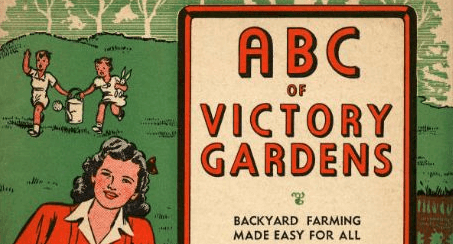The Victory Garden – Dealing With Weeds
Weeds…it might as well be a four-letter word!
Yes, we hate them too! One of the reasons people give up on gardening is because of weeds. It can be discouraging to go through so much planning and work just to have the garden overtaken by the enemy, and in the Tennessee heat, the last place we want to be is bent over in the blazing sun, wrestling with weeds that just won’t go away. The best way to deal with those vegetable stranglers is to avoid them in the first place.
How do we do that?
Mulch! Mulch not only inhibits weed growth, but it also breaks down slowly adding organic matter to your soil. There are several different mulch options that will help save you hours of back-breaking work. As an added bonus, mulches help retain moisture as they shield your soil from the scorching sun.
First, there are grass clippings but let’s qualify that. Clippings need to come from a lawn free of fertilizers or pesticides. You don’t want these chemicals leaching into your soil when it rains or, as it breaks down over time. The best time to apply a thick layer of grass clippings is early spring before any weeds in your lawn begin to go to seed. If your clippings contain weed seeds they will find their way down into the soil and overtake your garden bed the following year. A word of caution on grass clippings…grass is pure nitrogen which may not be the best selection to use around fruiting plants before they have bloomed, as excess nitrogen will enhance green growth but, slow or halt the fruiting process.
Another great mulch option is straw. Unlike hay, straw is usually the third cutting of a hayfield when stems are thick and seeds are long gone. Straw is also a carbon source rather than a nitrogen source so you don’t need to be concerned about using it around fruiting plants. Another benefit is that it doesn’t blow around like grass when it dries out. The straw will also break down more slowly in the garden and add structure to the soil.
Wood chips are another choice. This technique became popular with the Back to Eden method of gardening. Blends of small and large wood chips, and their leaf matter, are spread in a very thick layer over the garden bed. As the material breaks down, it creates an environment similar to the forest floor where weeds don’t grow but microorganisms thrive in the rich humus. We love this idea and it does work extremely well but, be aware that it takes a very large amount of wood chips and several seasons before you start seeing the benefits as wood chips take much longer to break down than grass or straw, but the benefits are worth the wait. One word of caution, fresh wood chips are a pure source of carbon that will tie up nitrogen in the soil so it’s best to let them age for a few months before using them.
If you would prefer an instant solution to weed prevention the solution is ground cover. This is a synthetic fabric laid over the soil. Holes are cut into it and your vegetables or seeds are planted. The fabric is porous, allowing water to drain through and will immediately block weeds and kill them permanently within a few seasons. Take note, however, the sun hitting the fabric will heat up your soil which is a great thing in spring and fall, but in the dead of summer, you may need to water a little more than you normally would.
We hope this information on weed prevention has been helpful. Getting ahead of the problem is the key to success and, in the long run, will save you hours of work!

